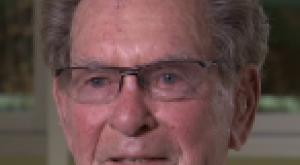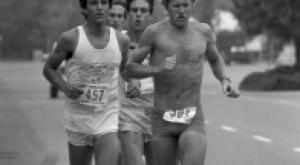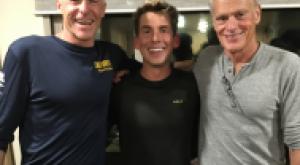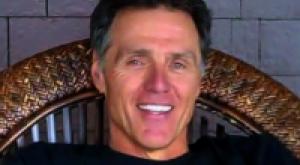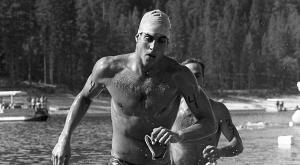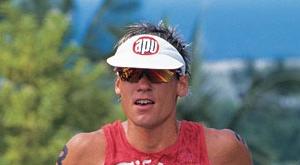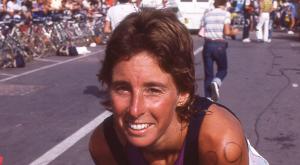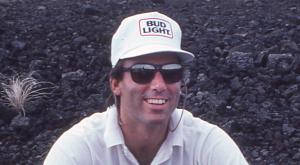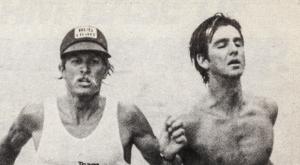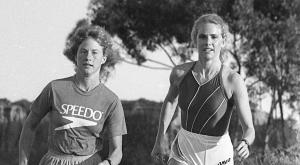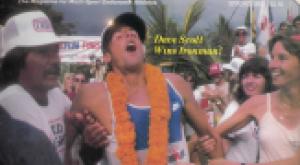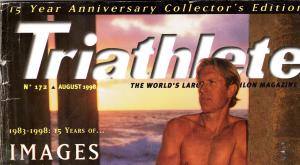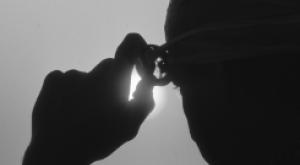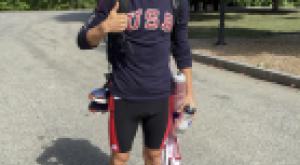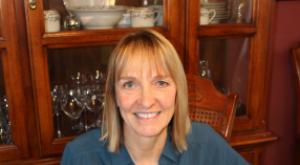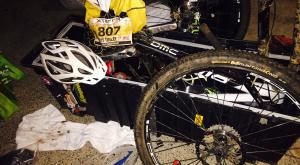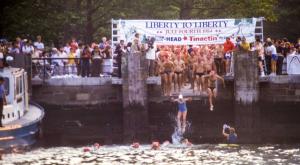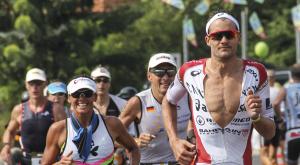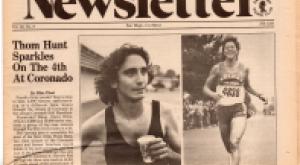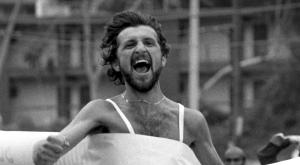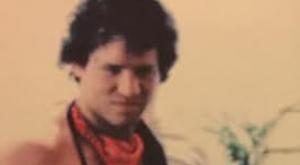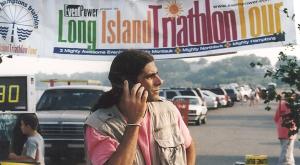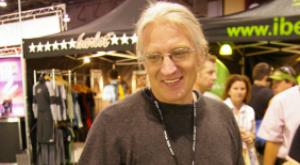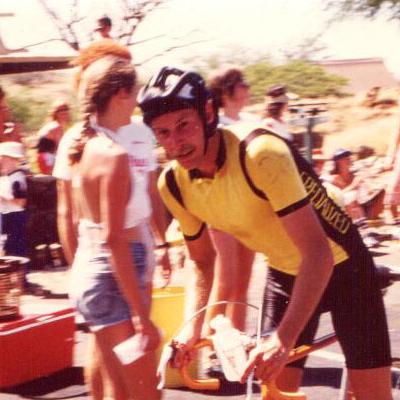
Dan Empfield at the Ironman in Kona, Feb., 1981
For Mark Montgomery (Monty on the Slowtwitch Forum, and my next door neighbor), Scott Tinley, Scott Molina and I, it was our first Ironman and very near all of our first triathlons. That was Kona in 1981, the first Ironman on the Big Island and when I say it was the first time we all attended that race I don’t mean to imply we knew each other. We didn’t. I don’t believe I met any of them until 1986 or later.
Except that I “met” Monty a few months prior to the ‘81 Ironman, in a race that still takes place in the Back Bay of Southern California’s Newport Beach, called for years The Human Race. It began, back then, with a bike ride, then we ran and we finished with the swim. I ran up onto the beach in 3rd place. I crossed the line in 4th place. Monty outsprinted me, dagnabbit.
That running of The Human Race took place in September, 1980. It was my first race involving swim, bike and run. The Hawaiian Ironman was my second, and in 1981 and prior the race took place each February. John Howard won that 1981 race, in 9:37, after learning how to swim (in his first Ironman, in 1980, he would have played touch and go with the swim cut-off had their been a cut-off). Multisport legend Tom Warren was second place and Tinley third. Scott Molina DNFd after running 2:36 marathon pace for a good while. He fueled himself with a jar of honey, carried in his bicycle’s handlebar pack.
Molina didn’t know any better. None of us did. None of us new anything. That was a big part of the charm. Today, that’s a part of the charm of anything that really excites me.
There were not cut-off times back then. I remember having breakfast, the morning after the race, at Uncle Billy’s Kona Bay Hotel, facing Alii Drive on the final run-in to the finish. It was about 9:30, and I heard a ruckus up the street. In came Walt Stack, to finish in 27 hours, all 74 years of him. Also in that race was Harry Cordellos, totally blind, who did the ride on the back of a tandem.
There were no cut-off times, but there were cut-off weights. We were weighed 5 times during that race, because nobody knew how safe it was, really, and it was thought that losing weight was the danger. Like those prior to motor vehicles who predicted death to any man traveling faster than 60 miles per hour, medical folks thought it might kill us if we lost 10 percent of our body weight. The only real fear any of us had, at the time, was losing that 10 percent, not because of physical danger, only because we feared getting pulled from the race. Some of us skipped a meal or two prior to our pre-race weigh in and then ate like fiends during the race. I weighed more at each weigh station (twice on the bike, once in bike-to-run transition, once during the run), than I did pre-race.
I did what an awful lot of us did when I got back to the mainland. I put on my own triathlon. The sport has arrived to us today from a lot who went over to Kona and raced that race in the early days and brought a little bit of it back home to replicate. I put on that race in the town in which I lived at the time – Reno, Nevada – in August of 1981. Like The Human Race the swim was also at the end. In a pool.
We didn’t care so much about formats and rules back then. A lot of races were draft-legal, including The Human Race, including my own produced race. My very first three-sport race was in 1978, and its format was Nordic skiing, running and then road cycling (draft legal). I remember having to sprint at the end on the bike, just like in a mass start bike race. Of course there were no aero bars back then.
My first “big” race other than the Hawaiian Ironman was in the summer of 1982. It was U.S. Triathlon Series (USTS) in Long Beach. The USTS and its founding partners, Jim Curl and Carl Thomas, are as responsible as anyone and anything for the growth of triathlon. That race in Long Beach had distances of 1.5km/40km/15km. How did we end up with a 10km run? Kilometers were like The Commandments in the Mel Brooks movie, History of the World, Part I. Moses descends Mt. Sinai with three tablets, announcing, “I give you these 15…” (one tablets falls to the ground and breaks) “Ten! These Ten Commandments!” How we got our ten kilometers – enshrining what was to become the Olympic distance – was no less accidental and arbitrary.
That race in Long Beach was the first time I saw an amazingly fluid runner stride way to a second place finish: Mark Allen.
Triathlon back then was notorious, because we had transitions, but no tri suits, no tri shorts, we didn’t know what to wear. As far as we knew we were supposed to wear swim apparel during the swim, then bike apparel, then running shorts. A transition meant, to us, not just changing sports, but clothes. We exited the water and, for some of us at least, everything came off, right there in the parking lot, then everything for the next leg went on. Men and women. That was the sport. That behavior changed not because, like Adam and Eve, we suddenly awakened to our nakedness, but because we awakened to transition splits.
Dan Empfield is an entrepreneur in the world of multisport, inventor of the triathlon wetsuit in 1987, and the triathlon-specific racing bike in 1989. The original designs were manufactured by the Quintana Roo which he founded in 1987. Empfield sold Quintana Roo in 1995 to Saucony and managed that company's bicycle division until June 1999. He left to start Slowtwitch.com. Today, Empfield is the editor and publisher of the popular on-line triathlon news and commentary web site slowtwitch.com. His FIST-based protocol of triathlon bicycle fitting is an industry methodology for fitting triathletes to their bikes. Empfield has been inducted into the Triathlete Magazine Hall of Fame (2004), has received the World Open Water Swimming Association's (WOWSA) lifetime achievement award (2010), and was named by Inside Triathlon as one of the ten most influential people in United States triathlon for 2012 and 2013. He serves on the board of directors of Triathlon Business International and is a former board member of USA Triathlon.

